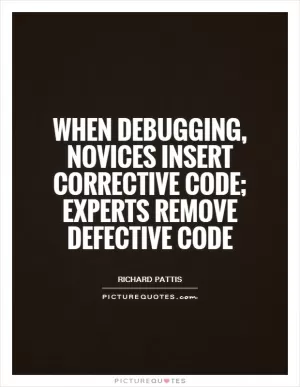It's not a bug - it's an undocumented feature

It's not a bug - it's an undocumented feature
In the world of programming, the phrase "It's not a bug - it's an undocumented feature" has become somewhat of a running joke among developers. It is often used to humorously explain away unexpected behavior or errors in a piece of software. While bugs are typically seen as negative occurrences that need to be fixed, undocumented features are seen as hidden gems that can be leveraged to enhance the user experience.Programmers are constantly faced with the challenge of creating complex systems that are expected to function flawlessly under a variety of conditions. However, the reality is that no piece of software is ever truly bug-free. Bugs can arise from a variety of sources, including coding errors, compatibility issues, and unexpected user interactions. When a bug is discovered, programmers are tasked with identifying the root cause and implementing a fix to ensure that the software operates as intended.
However, there are times when a seemingly erroneous behavior is not actually a bug, but rather an undocumented feature. These features are often the result of intentional design choices made by the developers, but were not properly documented or communicated to the end user. In some cases, these features may have been included as a way to provide additional functionality or customization options, but were not fully fleshed out or tested before release.
While undocumented features can sometimes be seen as a nuisance, they can also be viewed as opportunities for creativity and innovation. Programmers who are able to uncover and leverage these hidden features can often find new ways to enhance the functionality of the software and provide unique solutions to common problems. In this way, undocumented features can be seen as a form of "easter egg" that adds an element of surprise and discovery to the user experience.












 Friendship Quotes
Friendship Quotes Love Quotes
Love Quotes Life Quotes
Life Quotes Funny Quotes
Funny Quotes Motivational Quotes
Motivational Quotes Inspirational Quotes
Inspirational Quotes